Zona do título e menção de responsabilidade
Título próprio
Eric Parker fonds
Designação geral do material
- Textual record
- Graphic material
Título paralelo
Outra informação do título
Título e menções de responsabilidade
Notas ao título
- Source of title proper: Title based on provenance of fonds
Nível de descrição
Fundo
Código de referência
Menção de edição
Menção de responsabilidade da edição
Menção da escala (cartográfica)
Menção da projecção (cartográfica)
Menção das coordenadas (cartográfico)
Menção da escala (arquitectura)
Autoridade emissora e denominação (filatélica)
Zona de datas de criação
Data(s)
Zona de descrição física
Descrição física
4 cm of textual records
689 photographs : prints and negatives
2 compact discs
Zona dos editores das publicações
Título próprio do recurso continuado
Títulos paralelos das publicações do editor
Outra informação do título das publicações do editor
Menção de responsabilidade relativa ao editor do recurso contínuo
Numeração das publicações do editor
Nota sobre as publicações do editor
Zona da descrição do arquivo
Nome do produtor
História biográfica
Lieutenant Colonel Eric Parker was born on June 16, 1896, in London, England. He was a British military Commander with the Indian government who led a little known expedition of approximately 200 Punjabi soldiers from Calcutta to Tibet in November 1921. In addition, Lt. Col. Parker conducted basic and advanced infantry training of Tibetan soldiers from January to March 1923 at the request of the Tibetan military. During his military career, Lt. Col. Parker corresponded with British diplomat, Sir Charles Bell, and various members of the Tibetan government, including the 13th Dalai Lama.
On January 2, 1923, Lt. Col Parker married in Calcutta and, with his wife, travelled back to Tibet on horseback where his training of Tibetan soldiers would begin. After his initial British disapproval, Lt. Col. Parker became accepting of the Tibetan culture and during this period of his life learned to speak in Tibetan, Urdu, Tamil, and Punjabi. The Parkers adapted to Tibet, living in both Yutang and Ganze. After Lt. Col. Parker was released from the military, the couple tried to stay on and establish a trading station, but lasted only one year. During their stay in Tibet the Parkers collected numerous objects, letters, and photographs that provide rare documentation of this period in Tibet’s history (i.e., before the Chinese invasion in 1950). Lt. Col. Parker died in 1988.
Lt. Col. Parker was in the Indian military at a significant time in Tibetan history. From 1918-1921, evidence suggests the Dalai Lama continued to forge closer ties to the British. Since the Simla Convention in 1914, Britain and Tibet had agreed to Chinese ‘suzerainty’ over Tibet, but China refused to ratify the pact and agree to the territorial divisions established. In 1918, fighting broke out between British-trained Tibetan troops and the Chinese, and was later followed by British attempts to mediate and discuss a Tibetan autonomy settlement. In 1920 to 1921, Sir Charles Bell went to Lhasa to urge better relations between Tibet and Britain. Despite Tibetan reluctance to accept further British influence, Charles Bell suggested increasing military aid to Tibet, and it was in 1923 that Lt. Col. Parker arrived to train the soldiers. In 1924-25, pressure from the monks caused the Dalai Lama to dismiss his British-trained officers. Tibetan independence lasted until the overthrow of the Republic of China by the Communists in 1949, and the establishment of the People's Republic of China.
In 2005, photographs and textual records, along with several objects, were donated to the Museum of Anthropology by Lt. Col. Parker’s daughter, Mrs. Mary Noble. Lt. Col. Parker’s grandson, Father Harry Donald, provided valuable contextual information and is currently preparing to write a history of his grandfather’s time in Tibet.
História custodial
Âmbito e conteúdo
The fonds consists primarily of material accumulated and/or created by Lt. Col. Parker during the period of his military duties in Tibet and time spent there after his release from the military (1921-1924). This material includes textual records such as correspondence relating to military matters with Sir Charles Bell, and those written to, and received from, Tibetan officers and the 13th Dalai Lama. A few letters written in Tibetan have been recently translated into English and are included in the fonds. Other textual materials includes handwritten speech and other notes, published documents such as an Almanac (written in Tibetan), newspaper clippings, and miscellaneous items such as philatelic materials and handwritten children's rhymes and songs.
The fonds also contains a collection of black and white photographs and negatives, the majority of which were images taken by Lt. Col. Parker, while others, predate Parker’s time in Tibet. The photographs are housed in two albums (Photograph Collections A and B), and show Tibet primarily in the 1920s. The images depict military and domestic scenes in Tibet including photographs of individuals from all social strata, as well as local architecture and landscapes. Some of the places (e.g., monasteries) no longer exist. The albums also contain more recent colour prints of the many Tibetan objects acquired by the Parkers (and now housed in the Ethnology Collection at the Museum of Anthropology). Some duplicates occur within and between albums. The negatives correspond to prints in one album (Photograph Collection A). Only a small number of negatives have not been printed.
The fonds is arranged in the following 3 series:
- Correspondence
- Photographs
- Miscellaneous Materials
Zona das notas
Condição física
Fonte imediata de aquisição
Photographic records were acquired by the Museum of Anthropology by donation from Mrs. Mary Noble of Victoria, B.C. in August 2005. Mrs. Noble is the daughter of Eric Parker. An accrual of negatives and documents was made in October 2005
Organização
Arrangement of the textual material was imposed by the archivist (CY), while photographs were kept in their original order within two albums and designated as Collections A & B by Father Donald. These albums are now recognized as 'Photograph Collections A & B' or 'PCA and PCB'
Idioma do material
Script do material
Localização de originais
Disponibilidade de outros formatos
Two compact discs were created by Lt. Col. Parker’s grandson, Father Donald, and contain scanned images of photographs and of all textual records (including translations and transcriptions). These discs are stored in Box 1.
Restrições de acesso
Termos que regulam o uso, reprodução e publicação
Access to the Eric Parker collection of photographs and documents is restricted to “read only” for 5 years after donation. Anyone wishing to reproduce any of the photographs and documents within that time period must first contact Father Harry Donald for permission. Consult archivist for further details
Instrumentos de descrição
A series, box/file are available. Item lists for Photograph Collections A & B are also included
Instrumento de pesquisa gerado
Materiais associados
Ingressos adicionais
No further accruals are expected

![Dalai Lama + sectaries [sic] 1912](/uploads/r/null/0/e/0ec2e86ac1e65cd8e4715d2fce7157cc117c921fdba555dd3ad570a0567ca712/a033533c_142.jpg)
![Dalia [sic] Lama bless citizens of Chumbie 1912](/uploads/r/null/a/f/afe260447a400aa6f9f89fd8cbea417076580c0ec1ada727d85f61535b48582d/a033534c_142.jpg)
![PACHEN [sic] Lama](/uploads/r/null/6/5/65a5e5e8538d074d20be1a0ec6f86a8503d330bc9625ca6daabd0a6e6da6bd91/a033535c_142.jpg)

![Oricle ? [i.e. Oracle]](/uploads/r/null/1/8/182bf597a7f5b6a539ae8e175f7ae52a7dd94d3f7e2f48301e5c7cfcc2120af7/a033537c_142.jpg)
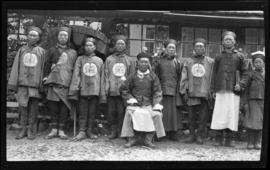
![Oracle Gyentse [?]](/uploads/r/null/1/b/1b0a908ba9be82b8a05fc1f85019eb03b1ddc0a8455f1e4af35bed560615618d/a033539c_142.jpg)

![Tibetan officer and troops (Khamba [escort])](/uploads/r/null/c/6/c6b23634b1c27c7e1364abfbc4f343618442a1dcdf157453680706bca0126a62/a033541c_142.jpg)
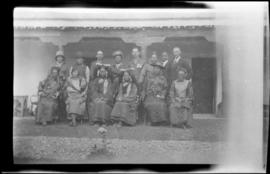
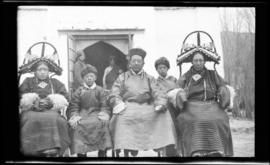
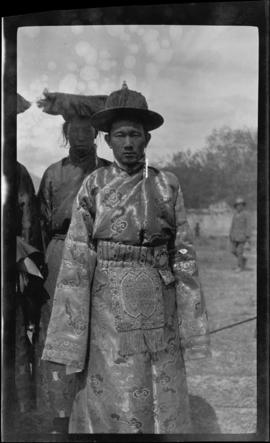
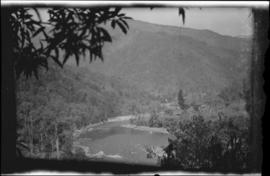

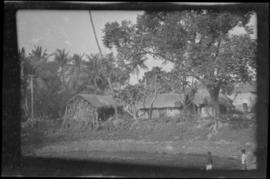

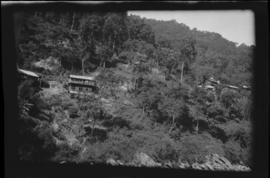
![Road to Gan[g]tok washed out spring 1922](/uploads/r/null/2/d/2d4bd4ed50c1439a1155d1895b8b3c8a5f097f673a13c0be8206ae570082ed31/a033550c_142.jpg)

![Kalimpo[n]g homes](/uploads/r/null/e/4/e479303087a4b2dd07bc648417d919d455bb0d6a461a85aabc7ae5111f2947e2/a033552c_142.jpg)